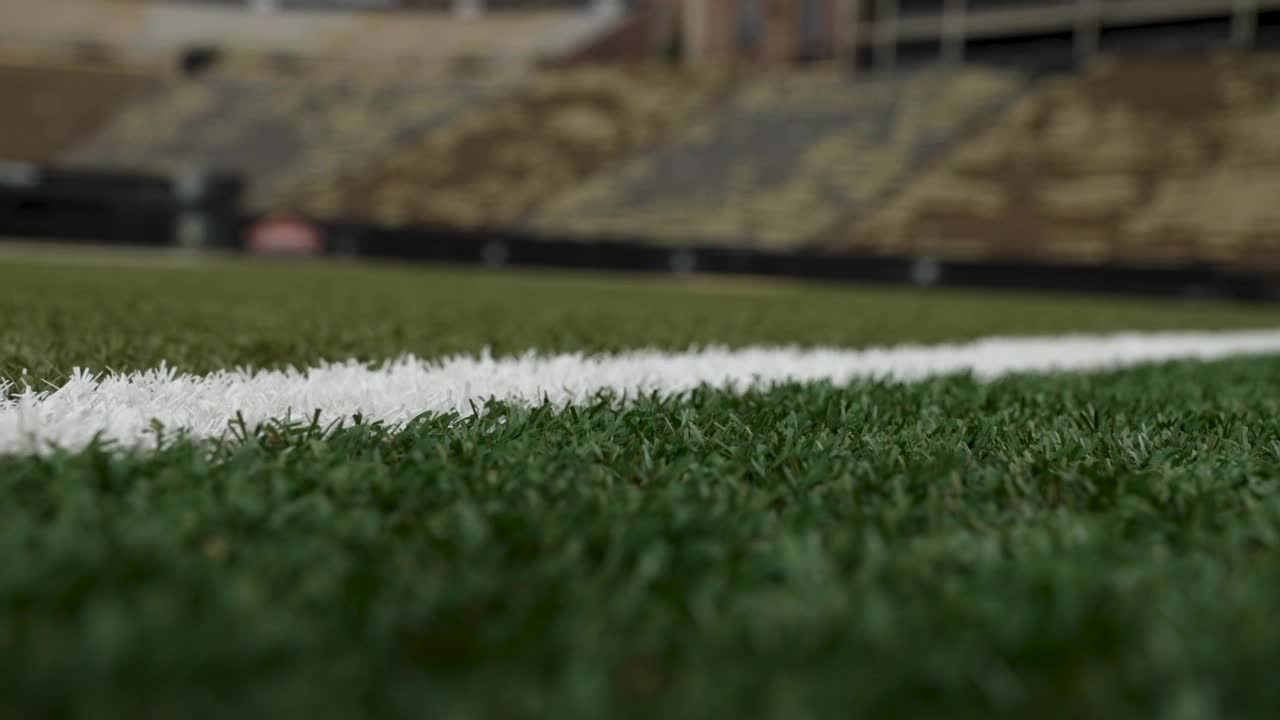BOULDER, Colo. — The Colorado Buffaloes will kick off the 2025 season at home against Georgia Tech on Friday. It will also be the first game for Folsom Field's new turf, which features an organic infill aimed at helping athletes and the environment.
Infill is spread on top of artificial turf after installation and fills the spaces between the individual blades of "grass" in order to provide stability and cushioning. Traditionally, infill has been made of rubber. Folsom Field instead uses BrockFILL, which is made of southern pine wood pellets.
The University of Colorado Boulder is the first NCAA Division I school to use BrockFill. Dan Sawyer, founder of Boulder-based Brock USA and CU Boulder alumnus, recognized a need for an alternative to rubber infill.

"It was never the mission of Brock to make infill, but we saw a problem and no one else was working on it," Sawyer said. "So it really became incumbent upon us to solve a problem that the industry just wasn't willing to face."
BrockFILL is made in Georgia at a zero-waste factory and then safety tested at Brock USA's headquarters in Boulder.
"It's important to do these kinds of tests because here at Brock, we want to always have the data," said Tom Murphy, Brock USA director of engineering. "We want to bring data to the market, and we want to understand how our products are going to behave over time because we wouldn't want to launch something that we're going to have a problem with three or four years down the road."
Not only is BrockFILL good for the environment, but it also "plays much more like natural grass" and helps keep the field cool.
"One of the biggest attributes of BrockFILL is it cools the field down, and one of the biggest challenges in the artificial turf industry is heat," Sawyer explained. "So you build a big, artificial turf field with rubber in the middle of the neighborhood, and you create a heat island, and there's a lot of objections to that. So BrockFILL is engineered to really keep that surface significantly way cooler."

When the company first started, it made "breathable, athletic padding" to put into gear to protect athletes. That idea soon changed into developing a pad to protect athletes from impacts on the field, leading to the creation of its ShockPad, which goes under the artificial turf.
"There's a statistic that came out years ago that about one in five impacts, one in five concussions happen when the head hits the surface," Sawyer said. "It's not a head-to-head impact or any body impact, but 20% of the impacts are head-to-surface impacts, so lowering that energy to the head is important."
Besides testing the BrockFILL, the company also tests its ShockPad to collect data and understand the impact of different fall heights.
- Learn more about the testing in the video player below
Folsom Field had artificial turf from 1971 to 1998. Jose Lopez, the director of athletic grounds at CU Boulder, has been working for the university for the past 25 years and was there when the school swapped out the turf for real grass. Lopez believes the return to turf will mean less maintenance and make hosting events easier.
"Just having more use of the field, not using fertilizer, not using all the water, seed to try to grow," Lopez explained. "We're saving money on that type of stuff."

The Buffs played on turf during their 1990 national championship season. Lopez is hoping this new turf brings similar luck.
"This is a big change for us. Hopefully, we end up with the W, and we can celebrate after that," he said.

College Sports
CU Boulder gears up for sold-out season opener with enhanced fan experience
This change is not the only one at Folsom Field this season. There's now a revamped student section called "The Charge," and the stadium no longer uses single-use plastic beverage bottles.
As a Buff, Sawyer is excited to be part of the improvements at Folsom Field and is looking forward to this new season.
"I have long dreamed of doing an NCAA college football stadium, and to have it be CU in the first one is literally a highlight of my whole career," he said.






